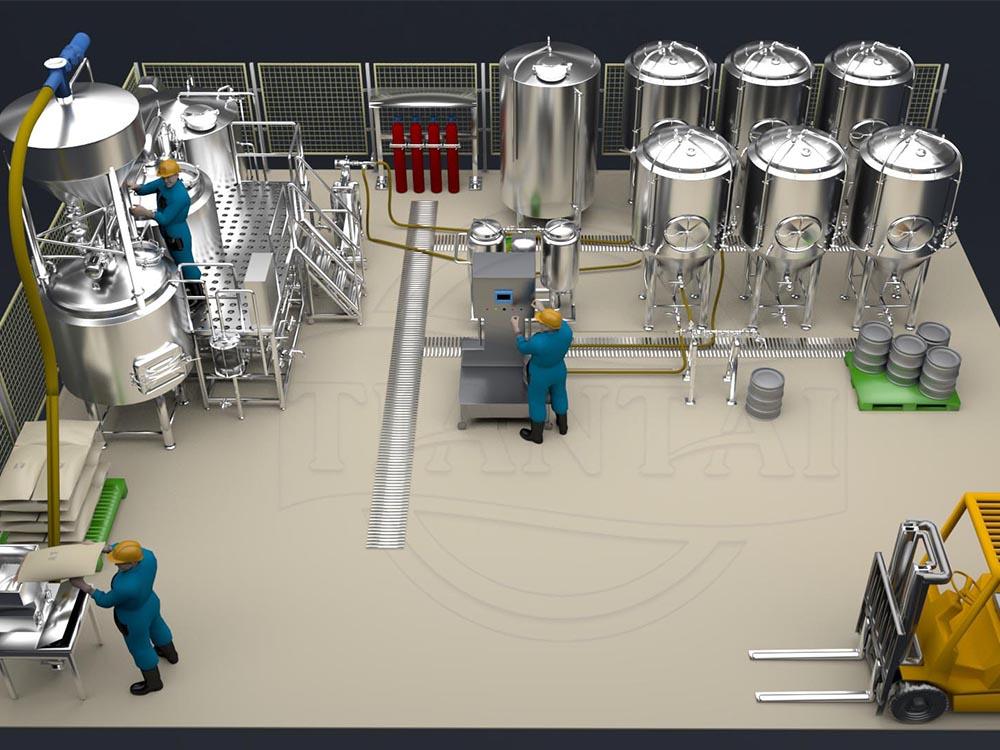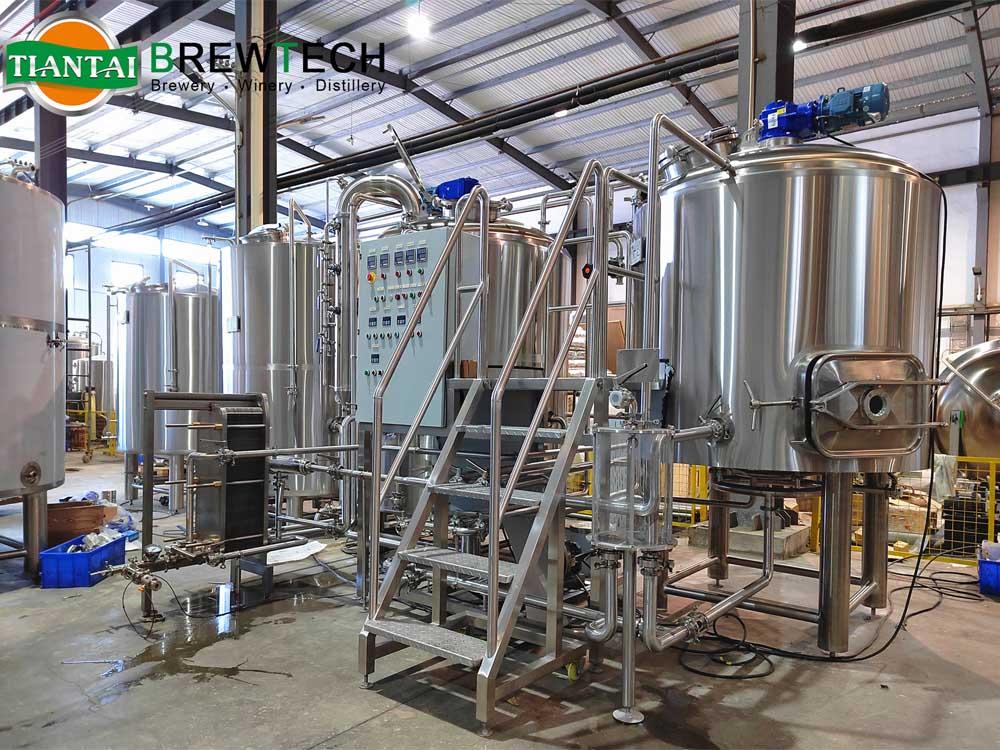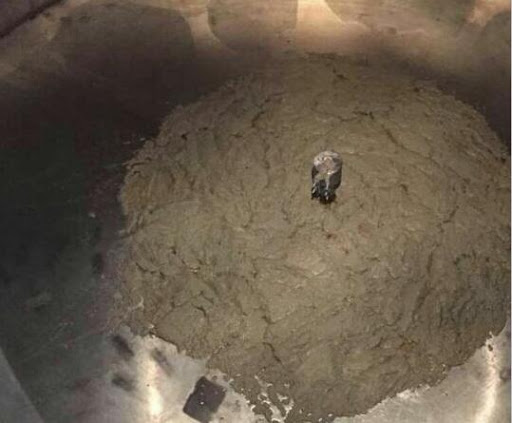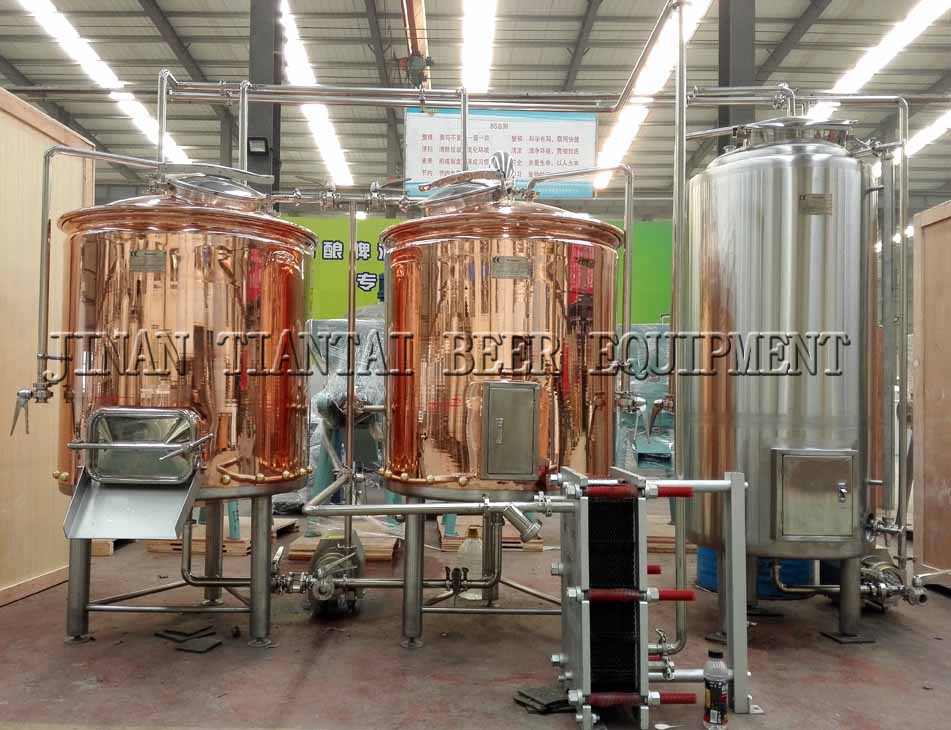Essential Brewing Equipment for Sorghum Beer Production
- Sep 30, 2025
- 67
- tiantai
Sorghum stands as one of humanity's oldest cultivated grains, maintaining its role as a fundamental ingredient in both traditional and contemporary brewing practices. Across Africa, sorghum beer (often referred to as opaque beer) has been a dietary staple for hundreds of years. Currently, sorghum is experiencing renewed interest globally as a key component in gluten-free brewing, creating fresh potential within craft beer and health-focused consumer segments.
The brewing process for sorghum differs from traditional barley brewing, demanding specific adaptations in both ingredient management and equipment configuration. Here we explore the core materials, the general production sequence, and the specific brewing apparatus needed for successful sorghum beer manufacturing.

Core Ingredients for Sorghum Beer
Sorghum Grain: The primary ingredient, supplying the essential starch for fermentation. Both red and white sorghum types are suitable.
Maize or Millet (Optional): Frequently incorporated in traditional recipes to adjust flavour profiles and support the fermentation process.
Hops (For Modern Recipes): Traditional opaque beers typically omit hops, whereas modern gluten-free sorghum beers commonly use them for bitterness and aromatic complexity.
Water: A consistent supply of treated, clean water is non-negotiable for product uniformity.
Yeast: Selection ranges from traditional spontaneous fermentation cultures to specific yeast strains, dictated by the desired beer style.
Enzymes (Optional): Due to sorghum's inherently low enzymatic power, supplementing with commercial enzymes often enhances the conversion of starch into fermentable sugars.

Standard Brewing Process Overview
Milling: Sorghum grains are crushed to an optimal particle size.
Mashing: The milled grain is combined with hot water in a mash tun; enzymes facilitate starch conversion into sugars.
Lautering / Filtration: The liquid wort is separated from the solid grain residue.
Boiling (Optional): The wort may be boiled to refine flavour, achieve sterility, and utilise hops if included.
Cooling: The wort temperature is reduced to a suitable range before adding yeast.
Fermentation: Yeast metabolises sugars, producing alcohol and carbon dioxide.
Maturation / Storage: Beer styles determine the next step—traditional opaque beer is often consumed fresh, while clearer varieties may undergo aging for stability and clarity.
Packaging: The finished product is transferred into containers such as PET bottles, cartons, or kegs.

Critical Brewing Equipment for Sorghum Beer
Grain Milling Equipment
Sorghum's hard outer layer presents more resistance than barley, necessitating a robust mill with adjustable rollers to achieve a consistent and effective crush.
Mash Tun with Heating and Agitation
Precise temperature management is vital, as sorghum starch gelatinises at higher temperatures than barley. A steam-heated mash tun equipped with a reliable agitator ensures even heat distribution and prevents the grain from sticking or burning.
Lauter Tun or Mash Filter
The relatively low husk content in sorghum can complicate wort separation. A lauter tun featuring fine false bottom plates or a specialised mash filter significantly improves wort clarity and recovery efficiency.
Wort Kettle and Whirlpool (Optional)
For brewers targeting clear, modern sorghum beers, a steam-heated wort kettle is essential for boiling and sterilisation. An integrated whirlpool tank assists in separating unwanted solids (trub) from the wort before cooling. This step is frequently bypassed in traditional opaque beer production.

Wort Cooling System
A plate heat exchanger rapidly lowers the wort temperature to the ideal range for yeast pitching, safeguarding yeast viability and minimising contamination risks.
Fermentation Tanks
Cylindroconical fermentation tanks with temperature-control cooling jackets are standard. They enable exact regulation of the fermentation temperature, a critical factor for both traditional and modern sorghum beer styles.

Bright Beer Tanks / Serving Tanks
For filtered sorghum beer, bright beer tanks provide a vessel for carbonation and temporary storage before packaging. Traditional, unfiltered opaque beer is often moved directly to serving tanks for immediate distribution and consumption.
Packaging Line
The choice of packaging—whether PET bottles, cartons, cans, or kegs—depends on the target market. An automated, hygienic filling line is crucial for ensuring product integrity and extending shelf life.
CIP (Cleaning-in-Place) System
A comprehensive CIP system, complete with tanks for hot water, caustic, and acid solutions, is indispensable for maintaining brewery hygiene. This is particularly important for sorghum beers, which can contain nutrients that promote microbial spoilage.
Conclusion
Mastering sorghum beer production involves a thoughtful integration of time-honoured traditions with modern brewing technology. Each stage of the process, from initial grain milling through to final packaging, depends on purpose-built equipment to ensure operational efficiency and a high-quality final product.
Whether the goal is to produce authentic opaque sorghum beer for regional markets or to develop innovative gluten-free sorghum beers for a worldwide audience, investing in the correct equipment forms the foundation of a successful operation.
At Tiantai Beer Equipment co, we specialise in creating tailored sorghum beer brewing solutions, supporting projects from compact craft systems to large industrial breweries. Leveraging our engineering expertise and manufacturing capability, we assist clients in establishing reliable production processes while preserving the distinctive character of sorghum beer.
Contact us now! Let us help you bring your beer brand to life — professionally, efficiently, and with character. Cheers!
Email: [email protected]
Sales manager of Tiantai beer equipment co

The brewing process for sorghum differs from traditional barley brewing, demanding specific adaptations in both ingredient management and equipment configuration. Here we explore the core materials, the general production sequence, and the specific brewing apparatus needed for successful sorghum beer manufacturing.

Core Ingredients for Sorghum Beer
Sorghum Grain: The primary ingredient, supplying the essential starch for fermentation. Both red and white sorghum types are suitable.
Maize or Millet (Optional): Frequently incorporated in traditional recipes to adjust flavour profiles and support the fermentation process.
Hops (For Modern Recipes): Traditional opaque beers typically omit hops, whereas modern gluten-free sorghum beers commonly use them for bitterness and aromatic complexity.
Water: A consistent supply of treated, clean water is non-negotiable for product uniformity.
Yeast: Selection ranges from traditional spontaneous fermentation cultures to specific yeast strains, dictated by the desired beer style.
Enzymes (Optional): Due to sorghum's inherently low enzymatic power, supplementing with commercial enzymes often enhances the conversion of starch into fermentable sugars.
Standard Brewing Process Overview
Milling: Sorghum grains are crushed to an optimal particle size.
Mashing: The milled grain is combined with hot water in a mash tun; enzymes facilitate starch conversion into sugars.
Lautering / Filtration: The liquid wort is separated from the solid grain residue.
Boiling (Optional): The wort may be boiled to refine flavour, achieve sterility, and utilise hops if included.
Cooling: The wort temperature is reduced to a suitable range before adding yeast.
Fermentation: Yeast metabolises sugars, producing alcohol and carbon dioxide.
Maturation / Storage: Beer styles determine the next step—traditional opaque beer is often consumed fresh, while clearer varieties may undergo aging for stability and clarity.
Packaging: The finished product is transferred into containers such as PET bottles, cartons, or kegs.

Critical Brewing Equipment for Sorghum Beer
Grain Milling Equipment
Sorghum's hard outer layer presents more resistance than barley, necessitating a robust mill with adjustable rollers to achieve a consistent and effective crush.
Mash Tun with Heating and Agitation
Precise temperature management is vital, as sorghum starch gelatinises at higher temperatures than barley. A steam-heated mash tun equipped with a reliable agitator ensures even heat distribution and prevents the grain from sticking or burning.
Lauter Tun or Mash Filter
The relatively low husk content in sorghum can complicate wort separation. A lauter tun featuring fine false bottom plates or a specialised mash filter significantly improves wort clarity and recovery efficiency.
Wort Kettle and Whirlpool (Optional)
For brewers targeting clear, modern sorghum beers, a steam-heated wort kettle is essential for boiling and sterilisation. An integrated whirlpool tank assists in separating unwanted solids (trub) from the wort before cooling. This step is frequently bypassed in traditional opaque beer production.
Wort Cooling System
A plate heat exchanger rapidly lowers the wort temperature to the ideal range for yeast pitching, safeguarding yeast viability and minimising contamination risks.
Fermentation Tanks
Cylindroconical fermentation tanks with temperature-control cooling jackets are standard. They enable exact regulation of the fermentation temperature, a critical factor for both traditional and modern sorghum beer styles.

Bright Beer Tanks / Serving Tanks
For filtered sorghum beer, bright beer tanks provide a vessel for carbonation and temporary storage before packaging. Traditional, unfiltered opaque beer is often moved directly to serving tanks for immediate distribution and consumption.
Packaging Line
The choice of packaging—whether PET bottles, cartons, cans, or kegs—depends on the target market. An automated, hygienic filling line is crucial for ensuring product integrity and extending shelf life.
CIP (Cleaning-in-Place) System
A comprehensive CIP system, complete with tanks for hot water, caustic, and acid solutions, is indispensable for maintaining brewery hygiene. This is particularly important for sorghum beers, which can contain nutrients that promote microbial spoilage.
Conclusion
Mastering sorghum beer production involves a thoughtful integration of time-honoured traditions with modern brewing technology. Each stage of the process, from initial grain milling through to final packaging, depends on purpose-built equipment to ensure operational efficiency and a high-quality final product.
Whether the goal is to produce authentic opaque sorghum beer for regional markets or to develop innovative gluten-free sorghum beers for a worldwide audience, investing in the correct equipment forms the foundation of a successful operation.
At Tiantai Beer Equipment co, we specialise in creating tailored sorghum beer brewing solutions, supporting projects from compact craft systems to large industrial breweries. Leveraging our engineering expertise and manufacturing capability, we assist clients in establishing reliable production processes while preserving the distinctive character of sorghum beer.
Contact us now! Let us help you bring your beer brand to life — professionally, efficiently, and with character. Cheers!
Email: [email protected]
Sales manager of Tiantai beer equipment co




.jpg)
